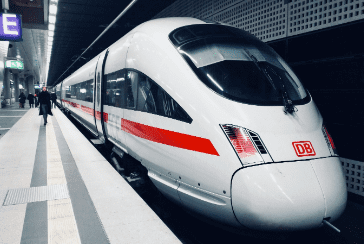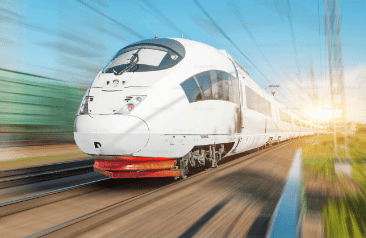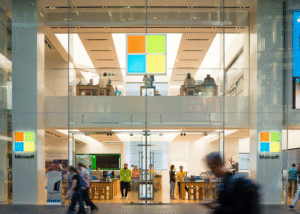High-Speed 2, or HS2, the UK’s ambitious rail project, just got a big boost. Thanks to Rachel Reeves, the Chancellor, the high-speed rail line is officially set to run directly into London’s Euston Station. This decision means that HS2 won’t stop at Old Oak Common in West London as was previously uncertain, but will continue right into the heart of London. Let’s break down what this means in a way that’s easy to understand.
What’s HS2, and Why Does It Matter?
HS2 is a massive project to build a new high-speed rail link between several major cities in the UK, aiming to make travel faster and more efficient. The goal is to connect London to Birmingham with the first phase, and later extend it to other cities. It’s seen as a major investment in public transportation, which could help reduce road traffic, improve travel times, and support economic growth. But, as with many big projects, it’s also faced delays, rising costs, and changing plans.

The Plan to Bring HS2 to Euston
For a while, it wasn’t clear if HS2 trains would actually reach London Euston, the central station. Originally, the project aimed to have trains run straight from Birmingham into Euston. But due to rising costs and financial challenges, previous leaders questioned if it would be affordable. In fact, the government almost stopped the line at Old Oak Common, a station in West London, to save money.
However, in the latest autumn budget announcement, Chancellor Rachel Reeves confirmed that there will be funding to make sure the line reaches Euston. Reeves described this funding decision as part of a plan to “get a grip” on HS2 and help it reach its full potential.
A Tunnel into London
To make this possible, the government will fund a 4.5-mile tunnel, known as a “twin-bore tunnel,” from Old Oak Common into Euston. A twin-bore tunnel means there will be two separate tunnels, allowing trains to move in both directions safely and quickly. This tunnel work will allow HS2 to connect directly to Euston, bringing passengers closer to central London rather than leaving them in West London.
The exact cost of this tunneling work isn’t clear, but estimates suggest it could be around £1 billion—a large sum, but crucial for completing the project. Reeves’ decision to allocate these funds is a commitment to completing the HS2 line as planned, which has reassured many who feared the project might be cut back even further.
Why This Decision is Important for Euston
Bringing HS2 trains directly into Euston has some big advantages. Euston is already a major station, with many trains connecting London to cities in the north of England and Scotland. Adding HS2 here will give travelers a direct route from Birmingham to central London, reducing travel time and making the journey more convenient.
Moreover, the decision to complete the line to Euston is expected to create more jobs and attract private investment to the area around Euston. This could mean new shops, offices, and facilities, helping the local economy grow. Reeves highlighted this as one of the key reasons for supporting the project’s completion.
Private Funding Still Needed for Station Upgrades
While the government is providing money for the tunnel, it seems likely that private investors will need to step in to fund the rest of Euston’s redevelopment. Updating Euston Station to handle both regular rail services and HS2 will be a major job. It’s estimated that this part of the project could cost nearly £5 billion. The original plan for Euston’s redevelopment was created in 2020, but it was later scrapped as costs rose. Now, with the confirmation that HS2 will reach Euston, the station’s design will need to be revisited.
The government hopes that private businesses will contribute to funding these upgrades, although there are concerns about how fast and willing investors might be. Earlier this year, a parliamentary committee expressed doubt, calling it unlikely that private funds would arrive “on the scale and speed required” to make the Euston extension happen smoothly.
History of Uncertainty
The recent budget decision clears up some uncertainty around HS2, but the project has faced challenges over the years. Just last year, the northern leg of HS2, which was supposed to continue from Birmingham up to the northern cities, was cancelled by the then-prime minister Rishi Sunak. He argued that cutting this part of HS2 would save £6.5 billion, and that private funding would be required to complete the last stretch to Euston.

Because of this decision, the future of HS2’s southern endpoint became unclear. If private investors couldn’t fund it, there was a real risk that the line might end at Old Oak Common instead of Euston, making it less convenient for passengers aiming to reach central London.
Next Steps
The HS2 project has already seen big machines, known as tunnel boring machines, lowered into the ground at Old Oak Common. These machines, shipped in from Germany, are designed to dig the tunnels that will eventually bring HS2 into Euston. This major step shows that construction is moving forward, with Reeves’ funding announcement now providing additional support.
As HS2 moves forward, many people are watching to see how the project progresses. There’s hope that the line will bring positive changes, not just in travel but also in job creation and local investments.
A Brighter Future for HS2
Despite all the challenges, this latest funding decision by the Chancellor suggests the government is committed to making HS2 a reality. While it still depends on some private funding for full redevelopment at Euston, Reeves’ commitment is a strong signal of support. HS2’s completion could mean better travel, more jobs, and a boost to the UK economy.











